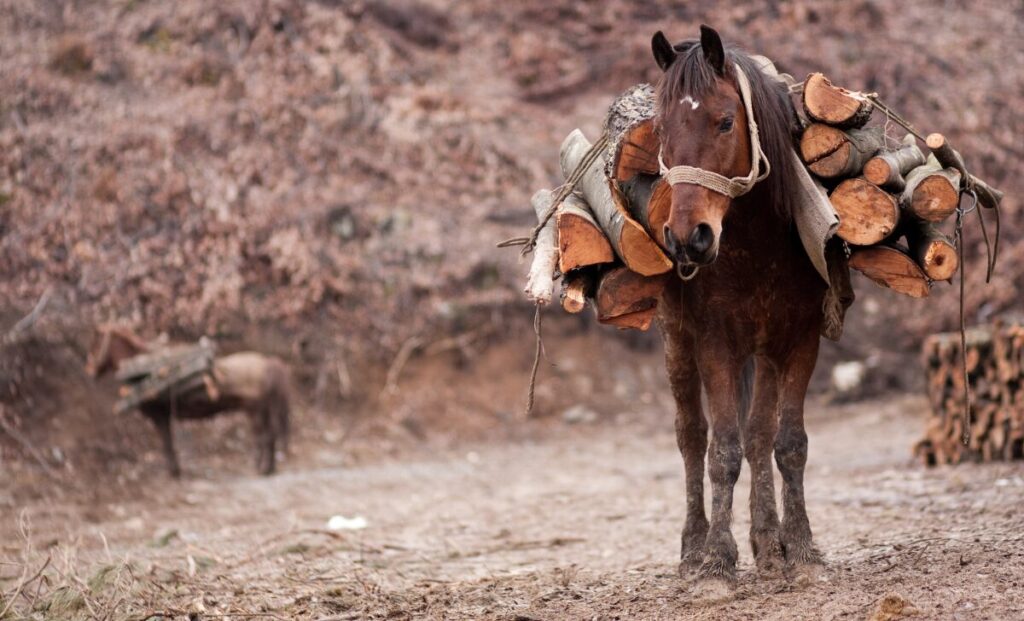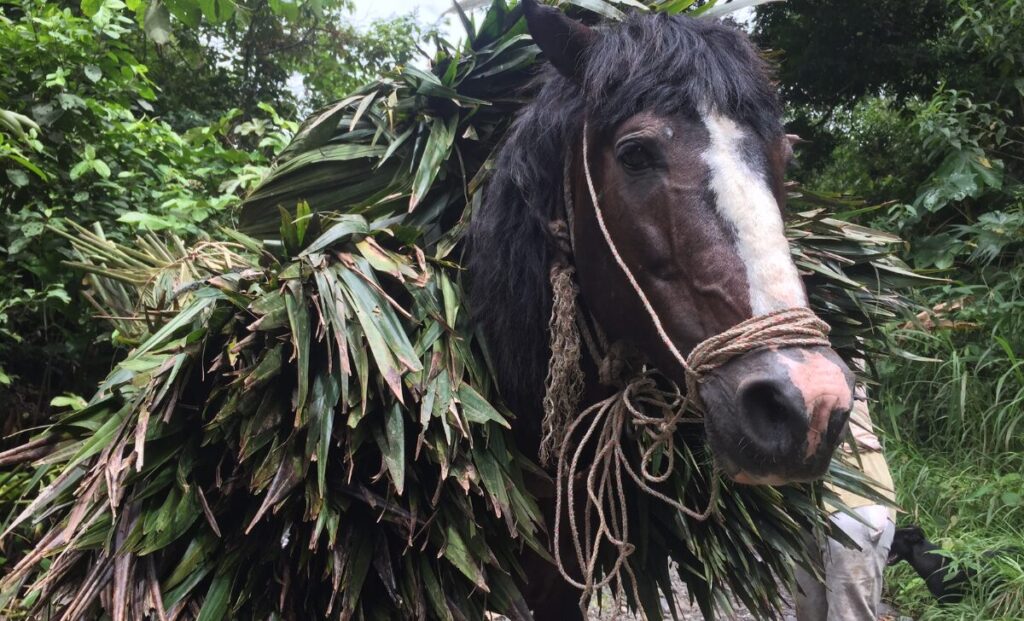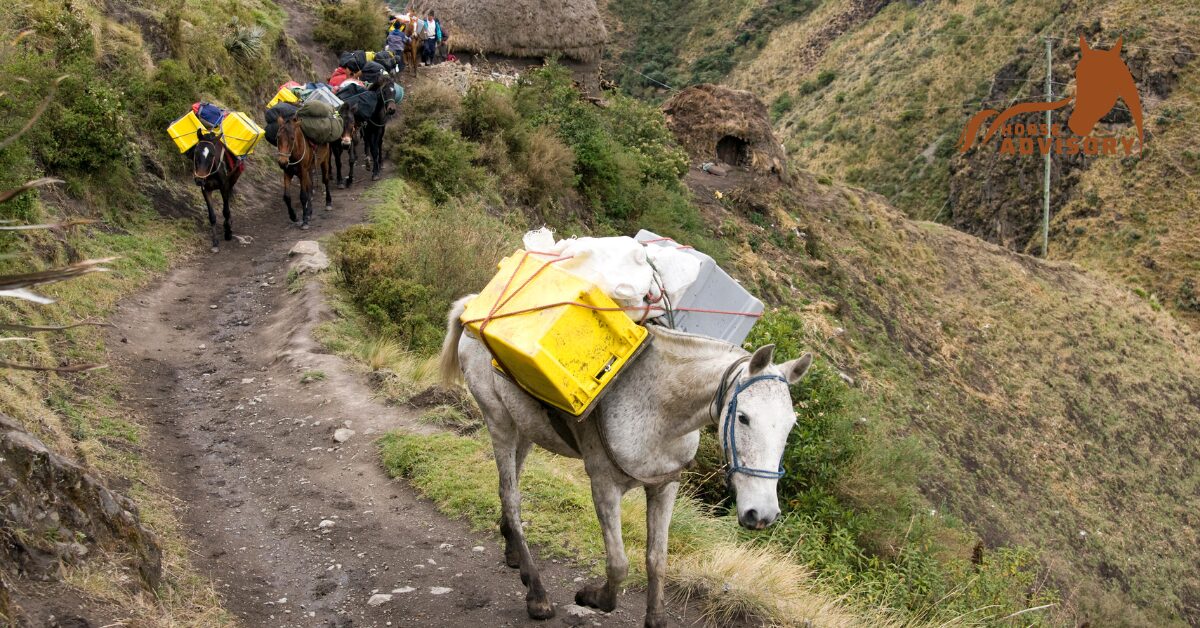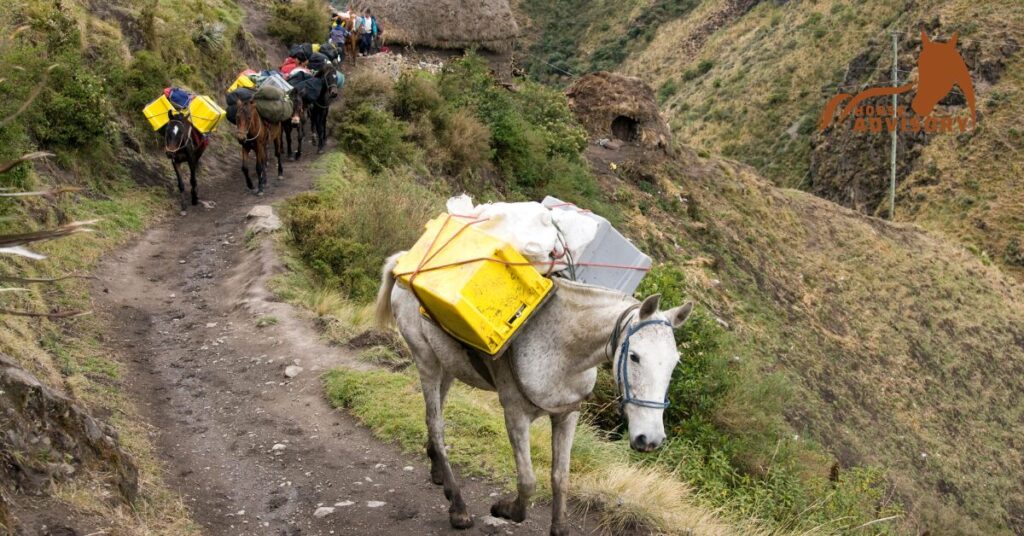Horses have been invaluable companions to humans for centuries, serving as reliable partners in various activities such as riding, working, and sports. One crucial aspect of horse care is understanding the weight-carrying capacity of these majestic animals. So, how much weight can a horse safely carry? Let’s delve into this topic and explore the factors that determine a horse’s ability to bear weight responsibly.
What Can A Horse Handle?
When selecting a horse, it’s important to take into account the rider’s weight. As a general guideline, a horse can comfortably carry approximately 15–20% of its own weight, which includes the rider and any gear. However, according to UK law, a horse is permitted to bear only 10% of its body weight.
How can we calculate if a horse will be able to carry us?
When assessing how much weight a horse can carry, several factors come into play:

Breed and Build
Contrary to popular belief, a tall horse isn’t always the optimal choice for bearing heavier loads. Their elevated center of gravity can make it easier for a less agile rider to destabilize them. Larger horse breeds generally excel at supporting heavier riders. However, they require higher levels of strength and balance, which might pose challenges for less experienced riders.
The most suitable breeds for carrying heavy loads include:
- Friesian horse
- Belgian horse
- Clydesdale horse
- Shire horse
- Mustang
- Quarter horse
- Suffolk Punch
- Warmblood
- Andalusian
- Paint horse
Health
A horse’s health and fitness are paramount factors influencing its ability to carry weight comfortably and perform well. Regular veterinary check-ups, proper nutrition, and a structured exercise regimen are essential components of maintaining a horse’s overall well-being. By monitoring the horse’s health closely and addressing any issues promptly, owners can ensure that their equine companions are in optimal condition to handle the physical demands placed on them. Prioritizing health not only enhances the horse’s performance but also fosters a strong bond between the horse and its caregiver, promoting longevity and quality of life for the animal.
Rider Weight
The weight of the rider, along with the equipment and tack used, plays a crucial role in determining how much weight a horse can safely carry. It is recommended that the total weight carried should not exceed a certain percentage of the horse’s body weight to prevent strain and potential injuries.
By being mindful of rider weight limits, riders can help maintain the horse’s comfort, mobility, and overall well-being during rides. This consideration is vital for ensuring the horse’s physical health and preventing undue stress on its muscles and skeletal structure.
Rider Height
Rider height can impact how weight is distributed on a horse’s back, influencing balance and comfort during rides. Taller riders may have a different center of gravity, potentially affecting the horse’s stability and movement. It is essential for riders to be aware of how their height can influence their interaction with the horse and make adjustments as necessary to maintain equilibrium and ensure a positive riding experience for both the rider and the horse. By considering rider height alongside other factors, such as weight distribution and saddle fit, riders can enhance the overall riding experience and promote the horse’s well-being.
Age
The age of a horse is a significant factor to consider when determining its weight-carrying capacity. Younger horses may not have fully developed musculature and skeletal strength to support heavy loads, making them more susceptible to injuries if overloaded. Conversely, older horses may have limitations due to age-related issues such as arthritis or decreased muscle mass. Understanding the age-specific needs and capabilities of a horse is crucial for tailoring training programs, managing workload, and ensuring that the horse can perform comfortably and safely. By taking age-related considerations into account, owners can support their horses’ long-term health and well-being throughout their lifespan.
Signs Of Overloading
Recognizing the signs of overloading in a horse is crucial for ensuring their well-being and preventing potential injuries. By observing their body language and behavior, riders can identify when a horse may be carrying too much weight. Here are some key indicators to watch out for:
Changes in Behavior
Overloading a horse can trigger behavioral changes, leading to irritability and anxiety. A once calm and obedient horse may become unresponsive to commands or hesitant to move when burdened with excessive weight. It’s essential to pay attention to these shifts in behavior as they can signal discomfort and strain on the horse.
Shortness of Breath
Experiencing shortness of breath is a common issue for horses carrying excessive weight. If a horse begins coughing or shows signs of respiratory distress, it’s important to promptly lighten the load and allow the horse to rest. Respiratory issues can significantly impact a horse’s performance and overall well-being.
Becoming Lame or Stiff
Lameness or stiffness in a horse’s movements can indicate that the weight being carried is too heavy. If a horse appears to move more slowly than usual or displays restricted mobility, reducing the weight load and gradually increasing it can help assess the impact on the horse’s comfort and mobility. Monitoring these changes in movement is vital for preventing musculoskeletal issues.
Excessive Sweating
While sweating is a natural mechanism for regulating body temperature, excessive sweating in horses during light work or under a typical load may indicate significant strain. If a horse is sweating profusely beyond what is considered normal, it’s essential to evaluate the weight being carried and ensure that the horse is not being overloaded, which can lead to dehydration and fatigue.
Back Aches and Soreness
Overloading can result in back aches and soreness for horses, particularly in the area where the weight is concentrated. Before saddling up or embarking on a ride, checking for signs of discomfort or pain in the horse’s back is crucial. Any indication of discomfort should prompt a reassessment of the weight distribution and adjustments to prevent undue strain on the horse’s back muscles and spine. Regularly monitoring for signs of back aches and soreness can help maintain the horse’s physical well-being and prevent long-term issues related to overloading.

Responsible Horse Management
Ensuring the well-being of our equine companions is a fundamental aspect of responsible horse management. By implementing these practices, we can safeguard our horses from the undue effects of carrying weight and maintain their health and performance:
Regular Exercise
Regular exercise plays a vital role in keeping horses healthy and fit, enabling them to carry heavier loads comfortably. Strengthening a horse’s muscles through various exercises not only enhances their endurance but also helps them adapt to the physical demands placed on them. Beneficial activities that contribute to maintaining a horse’s physical conditioning and overall well-being includes:
- Groundwork
- Lunging
- Hand-walking
- Equine massage and stretching
- Practice steering your horse
- Liberty training
- Leading your horse through water
A Proper Saddle
Selecting a suitable saddle is crucial for ensuring the comfort and safety of the horse while distributing weight evenly across their back. As a horse’s physical condition and fitness levels may change over time, it’s essential to have their saddle checked by a professional at least once a year. A well-fitted saddle not only prevents discomfort and potential injuries but also supports the horse’s performance during various activities.
Balanced Nutrition
Providing horses with a balanced and nutritious diet is essential for their overall health and vitality. Horses naturally graze throughout the day, primarily consuming hay and grass. While grains like oats, barley, and maize can supplement their diet, roughage should constitute the majority of their caloric intake. Fruits, vegetables, and concentrates are also valuable additions to a horse’s diet, especially for pregnant, nursing, competing, senior, or young horses. Including a salt lick or loose salt in their diet can help meet their mineral needs and support their well-being.
Vet Checks
Regular veterinary check-ups are essential for monitoring a horse’s health and detecting potential issues early. Since horses cannot communicate discomfort like humans, routine vet visits are crucial for assessing their overall well-being and addressing any health concerns promptly. For horses over the age of 20 years, more frequent vet check-ups, ideally every six months or as recommended by the veterinarian, are advisable to ensure their health and quality of life are maintained.
By adhering to these principles of responsible horse management, horse owners can promote the longevity, health, and happiness of their hooved companions, ensuring a strong bond built on trust and care.
FAQs
What is the weight limit for jockeys in horse racing?
Jockeys in horse racing typically have a maximum weight limit of 126 pounds (57 kg), including their equipment. However, this limit may vary depending on the association or event.
Which horse breed is best suited to carry heavy weights?
The Shire horse is known for its ability to carry substantial loads, but within the Shire family, the Clydesdale stands out for its capacity to carry the heaviest weights.
Final Thoughts
Recognizing the risks of overloading horses is essential for their well-being. By understanding signs of overloading and considering factors like breed, health, and age, we can ensure a healthy and enduring partnership with our equine companions. Remember, a contented horse leads to a satisfying ride.





